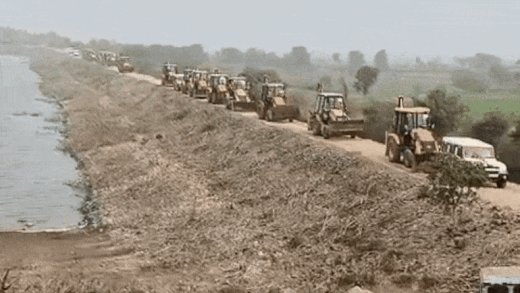More than 24.6 million people – half of Sudan’s population – are experiencing high levels of acute food insecurity, according to the IPC initiative, which tracks extreme hunger globally.
IPC’s Famine Review Committee (FRC) confirmed that famine (IPC phase 5) is present in at least five areas, including North Darfur’s Zamzam camp and parts of the Western Nuba Mountains.
The crisis is projected to expand further, with five additional areas – North Darfur localities of Um Kadadah, Melit, El Fasher, At Tawisha, and Al Lait – expected to face famine between December 2024 and May 2025.
Additionally, 17 other areas are at risk of famine, particularly those with significant influxes of internally displaced persons (IDPs). Regions affected include parts of North and South Darfur, Khartoum, and Al Jazirah states.
Most extreme human suffering
“Famine is the most extreme manifestation of human suffering, representing a catastrophic collapse of the systems and resources essential for survival,” the IPC report stated.
“It is not merely a lack of food but a profound breakdown of health, livelihoods, and social structures, leaving entire communities in a state of desperation.”
Though above-average rainfall supported agriculture in areas where security conditions allowed, ongoing conflict severely disrupted farming activities.
Farmers were forced to abandon fields, and crops were looted or destroyed, according to the report. Displaced families, particularly those in settlements and public buildings, remain cut off from the benefits of the harvest.
As a result, 8.1 million people are classified in IPC phase 4 (emergency) and 638,000 are already in phase 5 (catastrophe), adding to 15.9 million in phase 3 (crisis).
IPC phase 3 is marked by critical food gaps or reliance on crisis strategies, phase 4 involves severe malnutrition or emergency coping, and phase 5 signals famine with starvation, death and extreme malnutrition.
Conflict a key driver
The brutal conflict, which erupted between rival militaries vying for power and influence last April has driven over 12 million people – nearly a quarter of Sudan’s population – from their homes, exacerbating food insecurity and overwhelming host communities.
Fierce fighting continues to rage in densely populated areas, with widespread disregard for international humanitarian law on all sides.
Civilians have been killed and injured in overwhelming numbers, sexual violence is rife, and essential infrastructure – including healthcare and education facilities – lies in ruins.
Deadly diseases such as cholera are also spreading rapidly, against the backdrop of the breakdown in essential services, including healthcare, clean water and sanitation.
Urgent recommendations
The IPC report underscored that only an immediate cessation of hostilities can prevent the crisis from worsening.
It called for the restoration of safe, unhindered and sustained humanitarian access, particularly in conflict zones, and a significant scale-up of multi-sectoral humanitarian assistance.
Alongside, it also called for scaling up treatment for acute malnutrition, providing vital agricultural inputs to help vulnerable households sustain themselves, as well as conducting food security and nutrition surveys in unassessed areas to refine response efforts.
Source link
#Sudans #worsening #famine #Conflict #puts #millions #risk


















